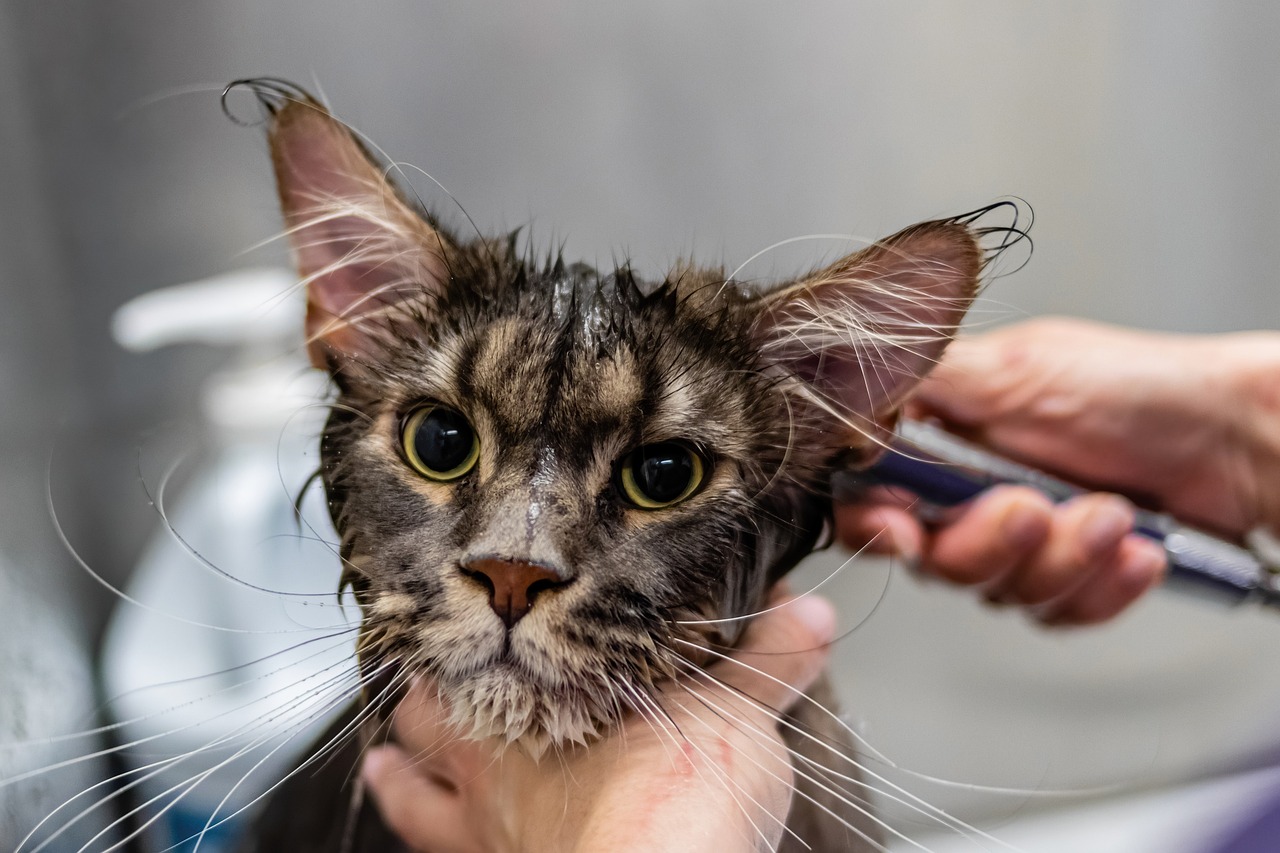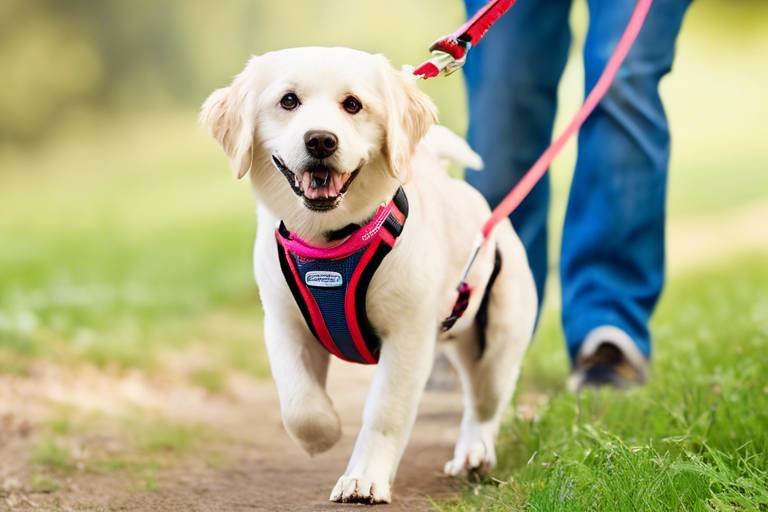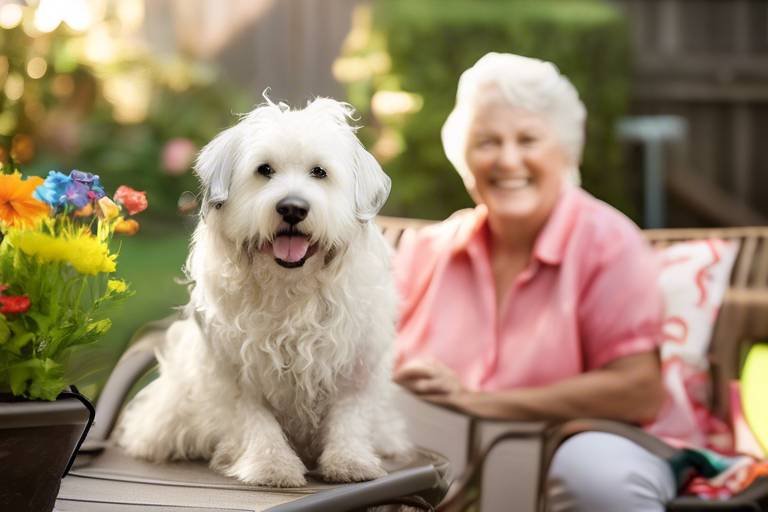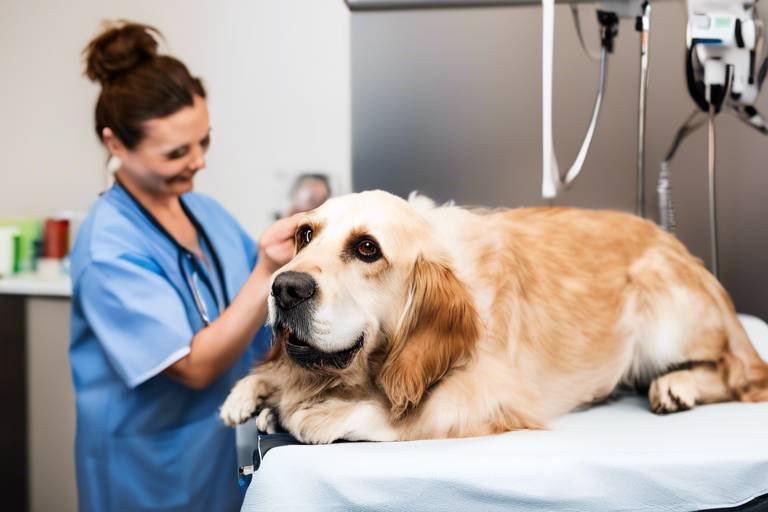How to Help Your Senior Pet Adjust to a New Home
Bringing a senior pet into your home can be one of the most rewarding experiences, but it can also be a significant challenge for both you and your furry friend. Just like us, our pets can experience a whirlwind of emotions when faced with a new environment. Imagine moving to a new city, where everything feels unfamiliar and a bit daunting. That’s how your senior pet might feel! It’s essential to approach this transition with care and understanding, ensuring that your pet feels safe, loved, and secure in their new surroundings.
This article explores effective strategies for easing the transition for senior pets into new environments, ensuring their comfort and well-being during this significant change in their lives. From understanding their unique needs to creating a cozy space, we’ll cover everything you need to know to help your beloved companion settle in smoothly. So, let’s dive into the world of senior pet care and discover how you can make their new chapter a happy one!
Recognizing the specific physical and emotional needs of senior pets is crucial for a smooth transition. As pets age, they may face various challenges, such as decreased mobility, changes in vision or hearing, and even anxiety about new situations. It’s like trying to navigate a maze blindfolded; they need a guiding hand to help them through. Pay attention to their body language and behaviors, which can provide valuable insights into how they are adjusting.
Common challenges include:
- Mobility Issues: Older pets may struggle with stairs or slippery floors.
- Health Concerns: Regular vet check-ups are essential to monitor any underlying health issues.
- Anxiety: New environments can be stressful, leading to anxiety or fear.
By addressing these challenges proactively, you can significantly ease the transition for your senior pet and ensure they feel comfortable in their new home.
Establishing a secure area in your home can help your senior pet feel more at ease. Think of this space as their personal sanctuary where they can retreat whenever they need a moment to regroup. Here are some tips for creating a welcoming and safe environment:
Selecting an appropriate spot for your pet's bed and belongings is vital. Consider factors such as:
- Quietness: Choose a location away from the hustle and bustle of daily activities.
- Accessibility: Ensure that your pet can easily access their bed and food without obstacles.
- Comfort: A soft, warm bed can make a world of difference in helping them feel secure.
Familiar toys, blankets, and bedding can help ease anxiety. Incorporating items that carry comforting scents and memories can be incredibly soothing. It’s like bringing a piece of their old home with them, which can significantly reduce stress levels. Make sure to include:
- Favorite blankets
- Chew toys or plush toys they love
- Items that smell like their previous home
A consistent daily routine can provide stability for your senior pet. Just like a well-tuned clock, having a predictable schedule for feeding, walks, and playtime can help them feel secure and reduce anxiety. Think about it: when you know what to expect, it’s easier to relax and enjoy the moment. Establishing a routine allows your pet to anticipate their needs being met, which can be incredibly comforting during this transition.
Proper nutrition is essential for senior pets' health. As they age, their dietary needs may change, and it’s crucial to consult with your veterinarian to determine the best food for them. Consider factors such as:
- Caloric Needs: Older pets may require fewer calories but more nutrients.
- Special Diets: Some may need prescription diets for specific health issues.
- Regular Feeding Schedule: Stick to a consistent feeding time to help them feel secure.
Regular, gentle exercise is important for senior pets. Think of exercise as a way to keep their spirits high and their bodies active. Activities like short walks, gentle play sessions, or even some light stretching can promote both physical and mental stimulation. It’s essential to keep their exercise routine manageable and enjoyable to prevent overexertion.
Keeping a close eye on your senior pet's health and behavior during the transition is crucial. Be alert for any signs of discomfort or distress, such as changes in appetite, lethargy, or unusual behaviors. These could be indicators that something isn’t quite right. If you notice any concerning symptoms, don’t hesitate to consult with a veterinarian. Remember, a healthy pet is a happy pet!
Emotional well-being is just as important as physical health. Offering companionship and reassurance can help your senior pet adjust to their new environment. Spend quality time with them, engage in gentle play, and provide plenty of affection. Your presence can be the anchor they need during this time of change.
Utilizing positive reinforcement can enhance your pet's confidence. Rewarding them for exploring their new space or following commands can encourage them to adapt more quickly. It’s like giving them a gold star for their progress, boosting their self-esteem and making them feel more secure in their new home.
Encouraging interactions with family members can help your senior pet feel more secure. Introduce them gradually to different family members, allowing them to build trust and comfort at their own pace. A warm smile or gentle voice can work wonders in making them feel at home.
1. How long does it take for a senior pet to adjust to a new home?
Adjustment times can vary, but it typically takes a few weeks for a senior pet to feel comfortable in a new environment. Patience is key!
2. Should I change my senior pet's diet right away?
It’s best to consult with your veterinarian before making any dietary changes. Transitioning to a new diet should be done gradually.
3. What signs indicate my senior pet is struggling with the transition?
Look for signs such as excessive hiding, changes in eating habits, or unusual vocalizations. If you have concerns, consult your vet.
4. How can I help my senior pet feel more secure?
Providing familiar items, establishing a routine, and spending quality time together can help your pet feel more secure in their new home.

Understanding Your Senior Pet's Needs
As our beloved pets age, their needs evolve, much like the changing seasons. Understanding these specific physical and emotional needs is crucial for ensuring a smooth transition into a new home. Senior pets may face various challenges, from mobility issues to anxiety, and recognizing these can help you tailor your approach. For instance, many senior pets experience decreased energy levels, which can make them less inclined to engage in play or even take long walks. This doesn’t mean they don’t want interaction; it simply means they may need more gentle encouragement and shorter activities.
Moreover, senior pets often have unique health concerns that require special attention. Conditions such as arthritis, dental issues, or impaired vision can affect their behavior and comfort levels. It’s essential to monitor their health closely, as changes in appetite, bathroom habits, or mobility can signal underlying problems. Regular veterinary check-ups become even more critical during this stage of life. In fact, a simple visit to the vet can provide insights into your pet's overall health and help you make informed decisions about their care.
Emotional well-being is equally important. Just like humans, pets can feel stressed and anxious, especially when faced with significant changes like moving to a new home. They may feel disoriented or unsure in unfamiliar surroundings, which can lead to behaviors such as hiding or excessive barking. To alleviate these feelings, it's vital to create a nurturing environment that fosters a sense of security. Consider the following factors that can help in addressing the needs of your senior pet:
- Physical Comfort: Ensure their resting areas are soft and accessible. Orthopedic beds can be a game-changer for pets with joint pain.
- Emotional Security: Spend quality time with them to build trust and reassurance.
- Routine and Predictability: Establish a daily routine that includes feeding, walks, and playtime to create a sense of normalcy.
By paying close attention to these aspects, you can better understand and support your senior pet’s needs during this transitional phase. Remember, patience is key! Just like us, our furry friends may take time to adjust to new environments. With your love and understanding, they can flourish and feel at home again.

Creating a Safe and Comfortable Space
Creating a safe and comfortable space for your senior pet is not just a luxury; it's a necessity. Imagine moving to a new city without knowing anyone or anything about your surroundings. That’s how your pet might feel in a new home. They need a comforting environment that provides security and familiarity. Start by choosing a designated area in your home where your pet can retreat when they feel overwhelmed. This space should be quiet, away from the hustle and bustle of daily life, and easily accessible. Think of it as their personal sanctuary, a place where they can feel secure and at ease.
When selecting the right spot for your senior pet's bed and belongings, consider factors such as lighting, noise levels, and accessibility. A corner of the living room or a cozy nook in your bedroom might be ideal. Ensure that this area is away from drafty windows or loud appliances. You wouldn’t want to sleep next to a washing machine that’s always on spin cycle, right? Make sure they have a comfortable bed that provides support for their joints, as older pets often deal with arthritis or other mobility issues.
Incorporating familiar items into your pet's new space can significantly alleviate anxiety. Think about their favorite toys, blankets, or even a piece of your clothing. These items carry scents and memories that can soothe your pet during this transition. For instance, a blanket that smells like home can be incredibly comforting. It's like wrapping yourself in a warm hug from a loved one. Having these familiar items around can help your senior pet feel more at home and less anxious about their new surroundings.
Additionally, consider creating a small area for their food and water bowls. This should be in a quiet spot where they can eat without interruptions. Keeping their feeding area clean and organized not only helps with hygiene but also reinforces a sense of routine and stability. Remember, the goal is to make this space as inviting and stress-free as possible.
Ultimately, your senior pet deserves a space that feels like their own, where they can relax and recharge. By thoughtfully selecting the location, providing familiar items, and ensuring comfort, you're setting the stage for a smoother transition. It's all about creating an environment that promotes their well-being and helps them adjust to their new life with you.
- How long does it take for a senior pet to adjust to a new home? The adjustment period can vary from pet to pet, but typically it may take a few weeks for them to feel completely comfortable.
- What should I do if my senior pet seems anxious? Ensure they have a safe space, provide familiar items, and consider consulting a veterinarian for additional support.
- Can I help my senior pet feel more secure? Yes! Creating a routine, providing emotional support, and ensuring they have a comfortable space can help immensely.
Choosing the Right Location
When it comes to ensuring your senior pet feels comfortable and secure in their new home, choosing the right location for their space is absolutely vital. Think of it as creating a cozy little sanctuary just for them—a place where they can retreat, relax, and feel safe. So, what should you consider when selecting this special spot? Let's break it down.
First and foremost, you want to look for a location that is quiet and low-traffic. Senior pets, much like us, can become easily stressed by loud noises and constant movement. A corner of the living room away from the hustle and bustle, or a cozy nook in a bedroom, can be perfect. This way, they can enjoy the warmth of your presence without feeling overwhelmed by activity.
Another crucial factor is accessibility. As your pet ages, they may experience mobility issues. Therefore, it's essential to place their bed and belongings in an area where they can easily navigate. Avoid stairs if possible, and consider a location that is close to their food and water bowls. This not only makes life easier for them but also encourages them to remain active without straining themselves.
Furthermore, you should think about the temperature of the chosen spot. Senior pets are often more sensitive to temperature fluctuations, so a location that maintains a comfortable climate is key. Avoid placing their bed near drafts or direct sunlight, which can make them too hot or too cold. Instead, aim for a spot that is naturally warm and cozy, perhaps near a radiator or in a shaded area during hot days.
Lastly, it can be beneficial to create a space that is familiar and inviting. Incorporating their favorite blanket or a piece of your clothing can help soothe their nerves and make the new environment feel more like home. Remember, this transition is just as significant for them as it is for you, so a little extra thought and care can go a long way in helping them adjust.
In summary, when choosing the right location for your senior pet, consider the following factors:
- Quietness: Find a low-traffic area to minimize stress.
- Accessibility: Ensure easy navigation to their essentials.
- Temperature: Choose a spot that maintains a comfortable climate.
- Familiarity: Incorporate items that smell like home.
By taking the time to carefully select the perfect spot, you are not just providing a bed; you are creating a haven where your senior pet can feel loved, secure, and at peace during this significant change in their life.
Providing Familiar Items
When it comes to helping your senior pet adjust to a new home, one of the simplest yet most effective strategies is to provide them with familiar items. Just like us, pets thrive on a sense of familiarity, especially during times of change. Imagine moving to a new city without knowing anyone or where to find your favorite coffee shop; it can be overwhelming! Now, picture having a cozy blanket from home or a beloved toy by your side. That’s the kind of comfort we want to replicate for our furry friends.
Familiar items can include anything that carries their scent or evokes positive memories. This might be their favorite bed, a blanket they’ve snuggled with for years, or toys that have been a part of their playtime routine. These items serve as anchors, reminding your pet of the love and safety they’ve known. For instance, a soft, worn-out blanket can provide warmth and security, while a squeaky toy can elicit joyful memories of playtime. Incorporating these items into their new environment can significantly reduce anxiety and help them feel more at home.
Here are a few essential items to consider bringing along:
- Bed: Their old bed can provide a familiar scent and comfort.
- Toys: Bring along their favorite toys, especially those they love to chew or cuddle with.
- Blankets: A blanket with their scent can create a safe space in their new surroundings.
- Food and Water Bowls: Using their familiar bowls can help maintain a sense of routine.
Additionally, if your pet has any specific items that soothe them, like a certain type of collar or harness, make sure to have those ready as well. The goal is to create an environment that feels like home, even in a new space. This approach not only provides physical comfort but also plays a crucial role in emotional reassurance.
As your senior pet begins to settle in, you might notice them gravitating towards these familiar items. This behavior is a positive sign that they are starting to feel more secure. Remember, patience is key. Give them time to explore their new surroundings at their own pace, and don’t hesitate to encourage them to engage with their beloved items. Soon enough, they will associate their new home with safety and love, thanks in part to the familiar comforts you’ve provided.

Establishing a Routine
When it comes to helping your senior pet adjust to a new home, establishing a consistent daily routine is one of the most effective strategies you can employ. Just like humans, pets thrive on predictability and familiarity. Imagine waking up in a new place, with everything feeling foreign and uncertain; it can be quite overwhelming! By creating a structured schedule for your pet, you provide them with a sense of security and stability during this significant transition.
Start by setting regular times for feeding, walks, and playtime. This not only helps your pet understand what to expect but also reinforces their trust in you. For instance, if you feed your pet at 8 AM and 6 PM every day, they will begin to anticipate meal times, which can alleviate anxiety. A simple table can help outline a daily schedule:
| Time | Activity |
|---|---|
| 8:00 AM | Breakfast |
| 9:00 AM | Morning Walk |
| 12:00 PM | Playtime |
| 6:00 PM | Dinner |
| 7:00 PM | Evening Relaxation |
In addition to feeding and walks, consider incorporating other activities into your routine that cater to your senior pet's needs. Gentle play sessions or quiet cuddle times can significantly enhance their emotional well-being. Think of it as weaving a comforting blanket of familiarity around them, making them feel safe and loved.
Moreover, be mindful of your senior pet's energy levels. As they age, they may not have the same stamina they once did. Adjust your routine accordingly to include shorter, more frequent walks and play sessions that match their capabilities. This not only keeps them active but also helps prevent any potential injuries that could arise from overexertion.
Remember, consistency is key! Try to keep the routine as similar as possible each day. If there are changes, such as a family outing or a visit from friends, ensure to maintain some elements of the routine. This could be as simple as keeping the feeding times the same, which will help your pet feel grounded even amidst the chaos.
Lastly, don't forget that routines can evolve. As your senior pet settles in and you learn more about their preferences and needs, feel free to adjust the schedule to better suit them. After all, you know your furry friend best! By being attentive and adaptable, you’ll not only help your senior pet adjust to their new home but also strengthen the bond you share.
- How long does it take for a senior pet to adjust to a new home?
Every pet is different, but it typically takes anywhere from a few days to a few weeks for a senior pet to adjust to their new environment. Be patient and supportive during this time. - What if my senior pet refuses to eat in the new home?
It's not uncommon for pets to lose their appetite when they are in a new place. Ensure you are providing their favorite foods and try to maintain their feeding schedule. If the issue persists, consult your veterinarian. - Should I change my senior pet's diet after the move?
Unless there are specific health concerns or recommendations from your veterinarian, it's best to keep your senior pet on their usual diet during the transition. Sudden changes can lead to digestive issues. - How can I tell if my senior pet is feeling stressed?
Signs of stress in pets can include excessive barking or meowing, hiding, loss of appetite, or changes in bathroom habits. If you notice these signs, it may be time to reassess your approach and provide additional comfort.
Feeding and Nutrition
When it comes to the well-being of your senior pet, play a pivotal role. Just like us, our furry friends experience changes in their metabolism and dietary needs as they age. It’s essential to choose a diet that not only meets their nutritional requirements but also caters to any health issues they may have developed over the years. So, what should you consider when feeding your senior pet?
First and foremost, consulting with your veterinarian is crucial. They can provide tailored recommendations based on your pet's specific health conditions, weight, and activity level. For instance, if your senior pet is suffering from arthritis, a diet rich in omega-3 fatty acids can help reduce inflammation and improve mobility. On the other hand, pets with kidney issues may require a diet lower in protein and phosphorus.
Another important factor is the texture of the food. Many senior pets struggle with dental issues, making it difficult for them to chew hard kibble. In such cases, consider switching to softer foods or even wet food, which is often more palatable and easier to digest. You might be surprised how a simple change in texture can make mealtime more enjoyable for your pet!
Here’s a quick overview of some common dietary considerations for senior pets:
| Health Issue | Dietary Recommendation |
|---|---|
| Obesity | Lower-calorie food; increased fiber |
| Arthritis | Omega-3 fatty acids; joint supplements |
| Kidney Disease | Lower protein and phosphorus; increased hydration |
| Dental Problems | Soft food; dental treats |
Additionally, it's vital to establish a consistent feeding schedule. Senior pets thrive on routine, and having set meal times can help them feel more secure. Try to feed them at the same times each day, and be mindful of portion sizes to prevent overeating. If your pet has specific dietary restrictions, consider using measuring cups to ensure you're providing the right amount of food.
Finally, always keep fresh water available. Hydration is just as important as nutrition, especially for senior pets who may be more prone to dehydration. Make it a habit to check their water bowl frequently and refill it with clean, fresh water.
In conclusion, feeding your senior pet requires a bit of extra thought and care. By paying attention to their unique dietary needs and consulting with your vet, you can ensure that they stay healthy and happy in their golden years.
- What is the best diet for senior pets? Consult your veterinarian for personalized recommendations, as dietary needs can vary based on health conditions.
- How often should I feed my senior pet? Establish a consistent feeding schedule, ideally 2-3 times a day, depending on your pet's needs.
- Can I give my senior pet treats? Yes, but opt for healthy treats and consider them part of their daily caloric intake.
- Is wet food better for senior pets? Wet food can be easier to chew and digest, making it a good option for pets with dental issues.
Incorporating Exercise
When it comes to our beloved senior pets, incorporating exercise into their daily routine is not just a recommendation—it's a necessity! Just like humans, as pets age, they tend to become less active, which can lead to a host of health issues. Imagine your furry friend as a fine wine; they only get better with age, but they also need the right conditions to thrive. So, how do we keep them moving and grooving without overexerting them?
First off, it's essential to understand that exercise for senior pets should be gentle and tailored to their specific needs. Think of it as a leisurely stroll through the park rather than a marathon! Regular, low-impact activities can help maintain their physical health and keep their minds sharp. Here are some great ways to incorporate exercise into your senior pet's routine:
- Short Walks: A couple of short walks throughout the day can be more beneficial than one long trek. This allows your pet to explore their surroundings at their own pace.
- Playtime with Soft Toys: Engaging your pet with soft, plush toys can stimulate their mind and keep them active without causing strain.
- Gentle Fetch: If your pet enjoys fetching, consider using a lightweight ball or a soft toy. Just a few tosses can be a fun way to get them moving.
Moreover, you might find that your senior pet enjoys activities that stimulate their senses. For instance, consider setting up a scavenger hunt in your home or backyard. Hide their favorite treats around the area and let them sniff out the goodies. This not only encourages movement but also keeps their minds engaged. Remember, the goal is to make exercise enjoyable rather than a chore. Just like how we feel more motivated to work out when we’re having fun, your pet will likely respond positively to playful activities.
It's also crucial to monitor your pet during exercise. Keep an eye out for signs of fatigue or discomfort. If they seem to tire quickly, it might be time to take a break or adjust the intensity of the activity. After all, we want to ensure that our furry companions are not only active but also comfortable. Hydration is equally important, so always have fresh water available for them before and after their exercise sessions.
Lastly, remember that every pet is different. Some may be spry and eager to play, while others might prefer a cozy spot in the sun. Tailor their exercise routine to fit their personality and physical condition. By providing a balanced mix of physical activity and rest, you're not just helping your senior pet maintain their health—you're also enriching their quality of life!

Monitoring Health and Behavior
When you bring a senior pet into your home, one of the most important responsibilities you take on is monitoring their health and behavior. Just like us, our furry friends can experience a range of changes as they age, and being vigilant can make all the difference in ensuring their comfort and happiness. So, what should you be looking out for during this transition? Well, let’s dive into some key aspects you should pay attention to.
First and foremost, keep an eye on any changes in their eating habits. Has your pet suddenly lost interest in their food or started eating less? This could be a sign of underlying health issues. On the flip side, if they seem to be eating more than usual, it might indicate other problems, such as diabetes or thyroid issues. Make sure to monitor their food intake and consult your veterinarian if you notice anything unusual.
Next, consider their activity levels. Senior pets may not have the same energy they once did, but a sudden drop in activity can be concerning. Are they still eager to go for walks or play with their favorite toys? If they seem lethargic or disinterested, it’s crucial to investigate further. Regular check-ins with your vet can help you understand what’s normal for your pet’s age and breed.
Another important aspect is their behavioral changes. Is your once-friendly dog becoming more withdrawn or irritable? Changes in behavior can signal discomfort, anxiety, or even pain. It’s essential to create an environment where your pet feels safe and secure. If you notice any significant shifts in their demeanor, don’t hesitate to reach out to a professional for guidance.
Here are some common signs to watch for that may indicate your senior pet needs medical attention:
- Changes in appetite or drinking habits
- Increased vocalization or unusual behavior
- Difficulty moving or reluctance to engage in normal activities
- Signs of pain, such as whimpering or sensitivity to touch
- Changes in bathroom habits, including frequency or consistency
It’s also wise to establish a routine for vet check-ups. Regular visits can help catch potential health issues early. Your veterinarian can provide tailored advice on what to monitor based on your pet’s specific needs. Keeping a journal of your pet’s behavior can be beneficial, as it allows you to track patterns over time and share them with your vet during appointments.
Lastly, don’t underestimate the value of emotional support. Sometimes, the best medicine is simply being there for your pet. Spend quality time together, engage in gentle play, or just sit close to them. This not only helps strengthen your bond but also gives you more insight into their health and well-being. Remember, a happy pet is often a healthy pet!
Q: How often should I take my senior pet to the vet?
A: Generally, it’s recommended to take senior pets for check-ups at least twice a year. However, your veterinarian may suggest more frequent visits based on your pet's health needs.
Q: What signs indicate my pet might be in pain?
A: Signs of pain can include whimpering, reluctance to move, changes in eating or drinking habits, and unusual aggression or withdrawal. Always consult your vet if you suspect your pet is in pain.
Q: How can I help my senior pet feel more comfortable?
A: Providing a cozy, quiet space, maintaining a consistent routine, and offering emotional support can help your senior pet adjust and feel more at ease in their new environment.

Providing Emotional Support
When it comes to helping your senior pet adjust to a new home, emotional support plays a crucial role. Just like humans, pets can experience anxiety and stress when faced with unfamiliar surroundings. Imagine moving to a new city, where everything feels foreign and overwhelming; that’s exactly how your furry friend might feel. So, how can you provide that much-needed emotional comfort? Let’s dive into some effective strategies!
First and foremost, spending quality time with your senior pet is essential. Whether it's lounging on the couch or taking a gentle stroll around the yard, your presence can be incredibly reassuring. Pets thrive on companionship, and your calm demeanor can help alleviate their fears. Think of it as being their anchor in a stormy sea of change. Try to engage in activities that your pet enjoys; this could be anything from playing with their favorite toy to simply petting them while watching TV. The goal is to create a sense of normalcy in their new environment.
Another effective method is to establish a consistent routine. Senior pets often find comfort in predictability. By keeping feeding times, walks, and play sessions at the same time each day, you provide a structure that can ease their anxiety. It’s like having a familiar schedule in a new school; it helps them know what to expect. Plus, a routine can help you bond with your pet as you share these moments together.
Additionally, consider using positive reinforcement techniques to boost your pet's confidence. Rewarding them with treats or praise when they explore their new surroundings can encourage them to be more adventurous. This approach not only reinforces good behavior but also helps them associate the new home with positive experiences. For example, if your pet bravely ventures into a new room, shower them with affection and a tasty treat. It’s all about creating a positive feedback loop!
Socialization with family members is another vital aspect of providing emotional support. Encourage your family to interact with your senior pet in a gentle and calm manner. This can help your pet feel more secure and less isolated. You might want to set up a “meet and greet” session where each family member takes turns spending time with your pet. This way, they can slowly build trust and form bonds with everyone in the household. Remember, the more love and attention they receive, the more comfortable they will feel in their new home.
Lastly, don’t underestimate the power of familiar scents. Bringing along their favorite blanket or a piece of your clothing can provide a sense of security. Our sense of smell is closely linked to our emotions, and for pets, familiar scents can evoke feelings of safety and comfort. So, when you’re setting up their new space, make sure to incorporate those comforting items that carry memories from their previous home.
In summary, providing emotional support to your senior pet during this transitional period is vital for their well-being. By spending time together, establishing a routine, using positive reinforcement, encouraging socialization, and incorporating familiar scents, you can help your furry friend feel more at home. Remember, patience is key, and with a little love and understanding, your senior pet will soon thrive in their new environment.
- How long does it take for a senior pet to adjust to a new home? Every pet is different, but generally, it can take anywhere from a few days to several weeks for a senior pet to adjust. Be patient and attentive to their needs.
- What signs should I look for to know if my pet is stressed? Watch for signs such as excessive barking, hiding, loss of appetite, or changes in behavior. If you notice any concerning symptoms, consult your veterinarian.
- Can I help my senior pet feel more comfortable with calming products? Yes! Products like calming collars, pheromone diffusers, or anxiety wraps can help ease stress and promote relaxation.
Positive Reinforcement Techniques
When it comes to helping your senior pet adjust to a new home, can be a game changer. Think of it as a way to build a bridge of trust and confidence between you and your furry friend. Just like humans, pets thrive on encouragement and praise, and using these techniques can make their transition smoother and more enjoyable.
So, what exactly is positive reinforcement? In simple terms, it’s rewarding your pet for good behavior rather than punishing them for undesirable actions. This method not only fosters a positive relationship but also helps your senior pet feel more secure in their new surroundings. For instance, if your dog sits calmly while you prepare their food, rewarding them with a treat or a gentle pat can reinforce that behavior. It’s like saying, “Hey, you did great! Let’s keep that up!”
Moreover, consistency is key. Establishing a routine where you consistently reward your pet for good behaviors can help them understand what you expect from them. You might find it helpful to create a simple chart to track their progress. Here’s a quick example:
| Date | Behavior | Reward |
|---|---|---|
| 01/01 | Sitting calmly during meals | Small treat |
| 01/02 | Going to their bed on command | Praise and petting |
| 01/03 | Walking gently on a leash | Favorite toy |
Incorporating various rewards can also keep things interesting for your pet. While treats are often the go-to choice, don’t underestimate the power of verbal praise or playtime. For instance, if your cat uses their scratching post instead of your furniture, shower them with affection and maybe toss in a few extra minutes of playtime with their favorite feather toy. It’s all about making them feel like the superstar they are!
Another effective strategy is to use clicker training. This method involves using a small device that makes a clicking sound to mark the exact moment your pet exhibits the desired behavior. After the click, you follow up with a reward. This technique can be particularly beneficial for senior pets who may have slower reactions; the clicker gives them a clear signal of what they did right, making it easier for them to learn.
Lastly, remember that patience is vital. Every pet learns at their own pace, and some may take longer than others to adjust to their new environment. If your senior pet seems hesitant or unsure, don’t rush the process. Instead, offer gentle encouragement and celebrate even the smallest victories. It’s like nurturing a delicate flower; with the right care and attention, they will bloom in their own time.
By utilizing positive reinforcement techniques, you’re not just teaching your senior pet good behavior; you’re also building a bond based on trust and love. This approach makes them feel safe and valued, turning their new home into a haven where they can thrive.
- What is positive reinforcement? Positive reinforcement is a training method that rewards desired behaviors to encourage their repetition.
- How can I tell if my senior pet is adjusting well? Look for signs of comfort, such as relaxed body language, eating well, and engaging in play.
- Can I use treats for positive reinforcement? Yes! Treats are a great way to reward your pet, but don’t forget about praise and affection.
- How long will it take for my senior pet to adjust? Every pet is different; some may adjust in days, while others may take weeks. Patience is key!
Socialization with Family Members
As your senior pet adjusts to a new home, one of the most impactful ways to help them feel secure and loved is through . Imagine your pet as a ship navigating through uncharted waters; the more familiar faces they see, the steadier their course becomes. It's essential to create an environment where your pet can build relationships with every member of the household. This not only helps them feel included but also fosters a sense of belonging, which is crucial for their emotional well-being.
Start by introducing your pet to family members gradually. If your household is bustling with activity, consider having everyone take turns spending quiet time with your pet. This can be as simple as sitting on the floor with them, offering gentle pets, or even sharing a treat. Positive interactions will help your pet associate family members with comfort and safety. Remember, patience is key; some pets may take longer to warm up than others. You wouldn't rush a fine wine, so don’t rush your pet's adjustment process!
Incorporating structured playtime can also enhance social bonds. Engaging in interactive games such as fetch or gentle tug-of-war can break the ice and make family members more approachable. If your senior pet enjoys being petted, family members can take turns brushing or grooming them. This not only promotes bonding but also helps in keeping your pet clean and comfortable. Just like how a warm hug can brighten your day, a gentle stroke can reassure your furry friend.
It's also important to consider the unique personalities of both your pet and your family members. Some pets may thrive on social interaction, while others may prefer a more laid-back approach. Pay attention to their body language—if your pet seems anxious or overwhelmed, give them the space they need. On the flip side, if they appear relaxed and happy, encourage more interaction. It's a delicate dance, but with a little observation and understanding, you can create a harmonious atmosphere.
Lastly, don't forget to involve younger family members in the process. Teaching kids how to interact gently and respectfully with your senior pet can be a rewarding experience for everyone involved. Establishing rules, like no loud noises or sudden movements, can help the pet feel more secure. This not only nurtures a bond between the pet and the children but also instills a sense of responsibility and empathy in the younger family members.
In conclusion, socialization is a vital aspect of helping your senior pet adjust to their new home. By fostering positive interactions with family members, you create a supportive environment that enhances their comfort and emotional health. Think of it as building a bridge of trust—each interaction strengthens that bridge, making it easier for your pet to cross into their new life.
- How can I tell if my senior pet is adjusting well? Look for signs of comfort, such as relaxed body language, willingness to explore, and engagement in play.
- What should I do if my pet seems fearful of family members? Take it slow; allow your pet to approach at their own pace and provide positive reinforcement for any brave steps they take.
- Can I encourage socialization through training? Absolutely! Training sessions that involve family members can promote bonding and help your pet feel more secure.
Frequently Asked Questions
- What are the common signs that my senior pet is stressed during the transition?
Senior pets may show signs of stress through changes in behavior such as hiding, excessive barking, or meowing, loss of appetite, or changes in their sleeping patterns. They might also be more clingy or withdrawn than usual. Keeping an eye on these signs can help you address their needs promptly.
- How can I make my senior pet feel more comfortable in a new home?
Creating a safe and familiar space is key. Set up a cozy area with their bed, some favorite toys, and blankets that carry familiar scents. This will help them feel secure. Additionally, maintaining a consistent routine for feeding, walks, and playtime can provide the stability they need during this transition.
- Is it necessary to change my senior pet's diet when moving to a new home?
While it's not always necessary to change their diet, it’s important to ensure their nutrition is appropriate for their age and health condition. Consult with your veterinarian to discuss any dietary adjustments that may be beneficial, especially if your pet has specific health concerns.
- What types of exercise are suitable for senior pets?
Gentle exercises are great for senior pets. Consider short walks, light play sessions, or even swimming if they enjoy water. The key is to keep the activities low-impact and enjoyable, ensuring they don’t overexert themselves.
- How can I help my senior pet adjust emotionally to the new environment?
Providing emotional support is crucial. Spend quality time with your pet, offer them reassurance through gentle petting, and engage in their favorite activities. Using positive reinforcement for good behavior can also help boost their confidence and comfort level in the new home.
- When should I consult a veterinarian during this transition?
If you notice any significant changes in your senior pet’s behavior, appetite, or health, it’s important to consult a veterinarian. Regular check-ups can help monitor their health, especially during stressful transitions like moving to a new home.
- How can I encourage my senior pet to socialize with family members?
Encourage family members to engage with your pet through gentle interactions, such as offering treats or playing together. This helps build a bond and makes your pet feel more secure in their new environment. Be patient, as it may take time for your pet to warm up to new faces.



















